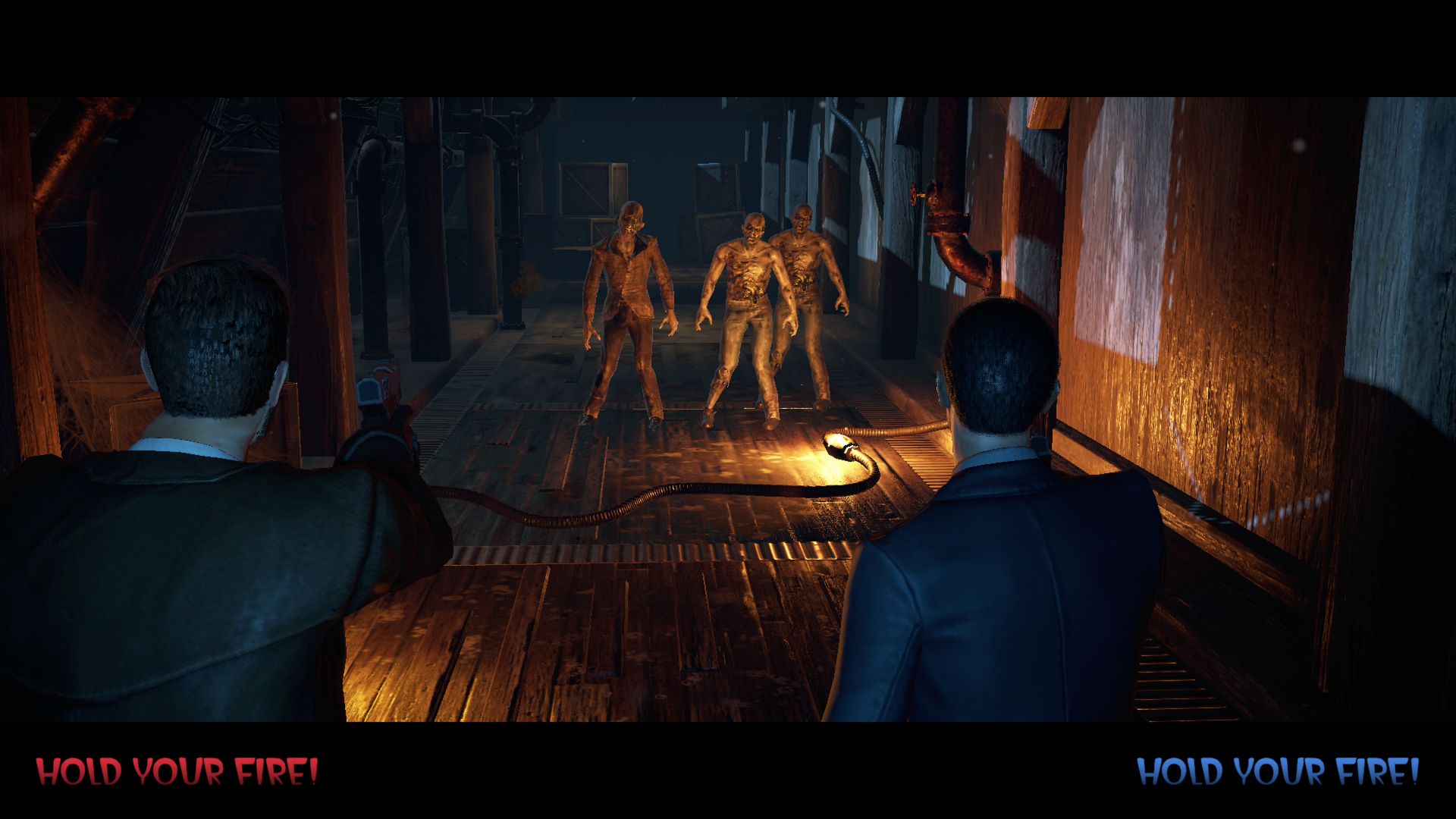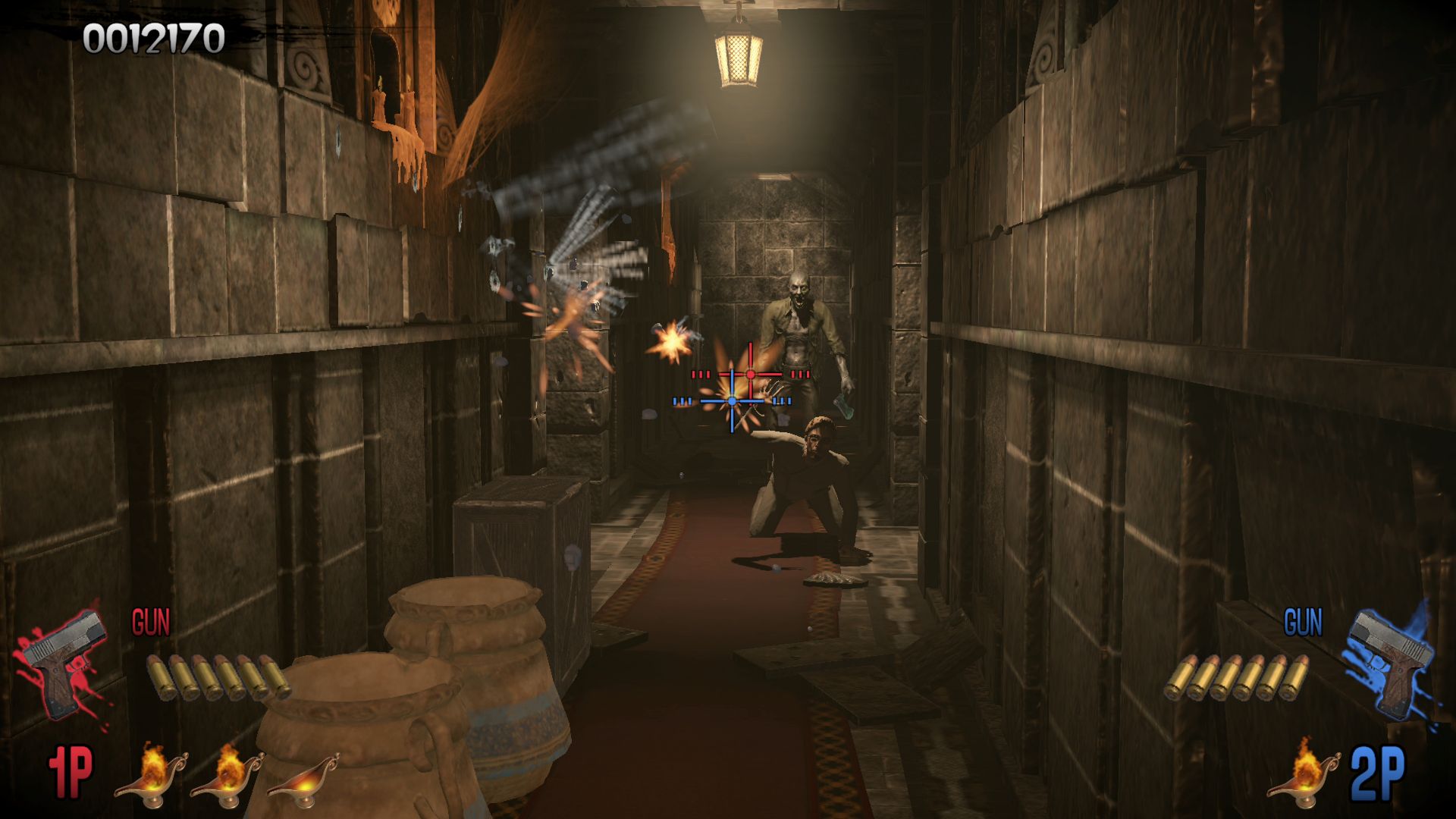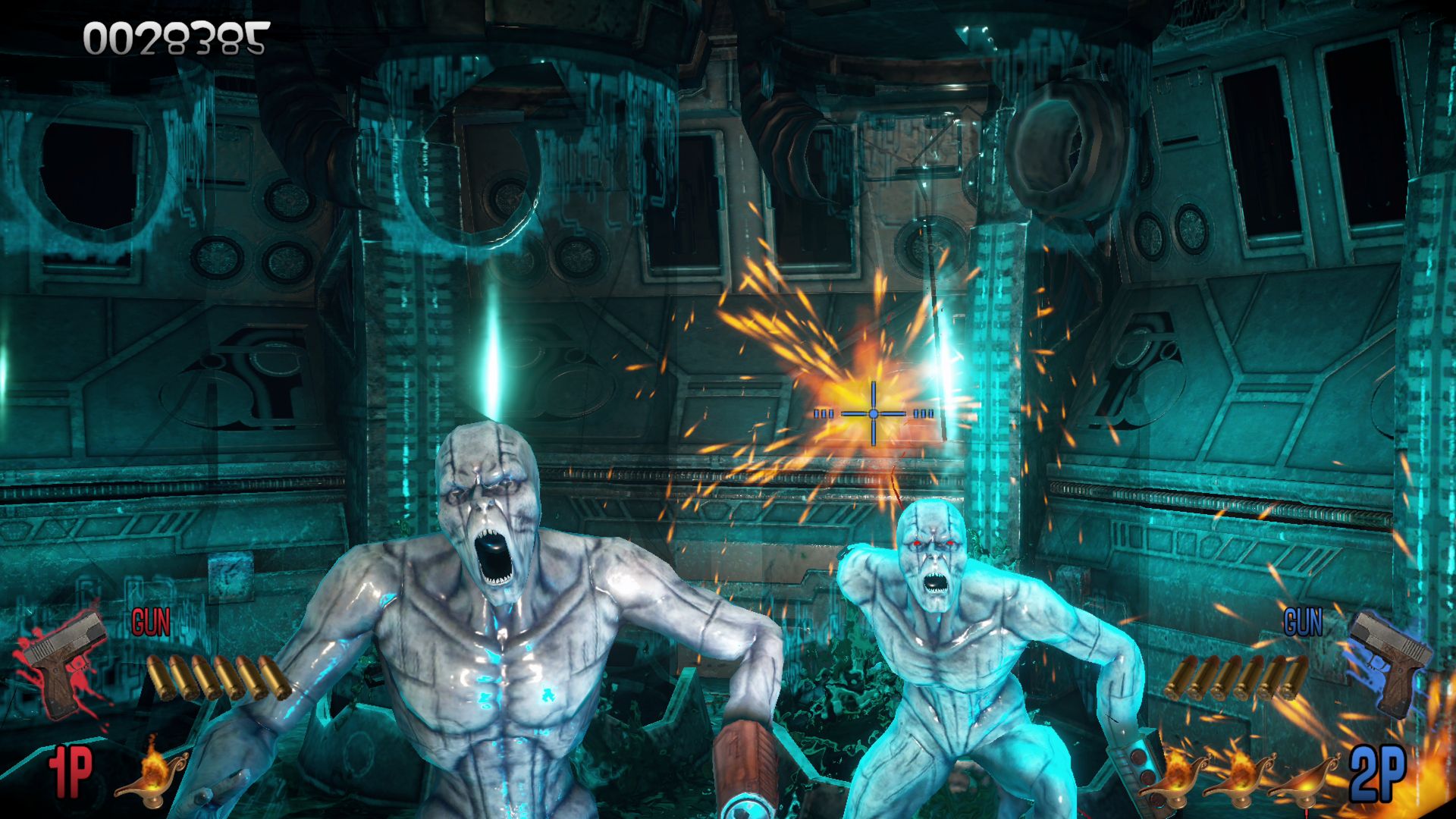

The original House of the Dead arcade game is one of the titles for which Sega famously lost the source code, hence there were no further ports of the game after the Saturn and PC versions in 1998. Despite the first game’s limited availability, it would go on to spawn numerous sequels and even a terrible Uwe Boll film. Now, more than 20 years later, the first HotD finally comes home again thanks to MegaPixel and Forever Entertainment. The House of the Dead: Remake brings most of the fun of the arcade game (including 2-player local co-op) to the current generation of consoles and Steam.
The House of the Dead tells a simple narrative in which two AMS agents, Rogan and G, arrive at a mansion after receiving a distress call from Sophie, a woman they know. Once there, the heroes learn that the owner of the mansion, Dr. Curien, has created an army of zombies and other biological monsters, unleashing them on his own scientists. The protagonists must stop Curien, save as many scientists as possible, and, hopefully, rescue Sophie from the titular house.

All screenshots from Xbox version
Originally played with a light gun, HotD has always been a rail shooter in which one or two players are automatically propelled forward through the house and its surroundings, stopping to blast whichever zombies, mutated dogs, bats, and other monsters happen to threaten them. Along the way, the heroes will occasionally encounter scientists who can be killed or rescued from attackers (with Achievements related to both outcomes).
Remake builds on the rescuing objective slightly by having a dying scientist at the beginning bestow the agents with a photo of the entire research team. After beating a level, the photo will be updated to show who lived and who died. Certainly a cool touch, but it would be even better if the photo and names of the researchers could be viewed outside of the game, an option sometimes offered in the Metal Slug series.

The first three of the game’s four levels have branching paths that can be accessed by hitting or missing certain targets. This adds replay value, but I wish the game better indicated these crossroads when players encounter them. It’s easy to miss that there was even an alternate route during all the gunfights. Admittedly, a map of the player’s route appears after the game ends, but you really have to memorize the levels or follow a guide to have a good shot at seeing all the different paths.
The levels themselves don’t feature as many unique set pieces as subsequent games, but they do all end in exciting boss fights. The first boss, a mutated humanoid whose armor must be shot off piece by piece, the flying man-bat who grabs hapless NPCs and drops them to their death, the giant spider-plant monster, and the demonic final boss are still memorable encounters after all these years. Bosses and regular enemies can be viewed in the gallery after being beaten, a new feature of this remake. There's also a photo mode; just pause and select it at any time.
Horde Mode
Replayability is always an important concern with home ports of arcade games. To that end, HotD: Remake launches with two primary game modes: Original and Horde (at least one additional mode is planned for a future update) . The only difference I’ve observed with Horde mode is that it greatly increases the number of enemies that players must face. That sounds okay in theory, but with controller-based aiming already being slower than light-gun based aiming, Horde just isn’t balanced very well. What’s more, there are no Horde-specific Achievements – kind of a mercy. Shame that Horde mode is undercooked.
Both Original and Horde modes offer multiple difficulty levels, a choice of classic or modern (combo-based) scoring system, and the choice of cooperative or competitive multiplayer scoring. Regardless of the chosen scoring method, the game is still cooperative at heart. It’s just that the two players share score in Co-op but have independent scores in Competitive. The continue system in this version is tied to score as well; it costs points every time a player continues. Not to worry, though – players can still continue even after running out of points. On the downside, while the game saves high scores, it doesn’t offer online leaderboards, so score doesn’t matter all that much anyway.
A big part of score and performance will come down to how well players adjust to Remake’s controls. Some die-hards have no interest in playing without light guns, but the game plays perfectly well with analog controls. Just aim the crosshair, fire, and reload – not worlds different from playing a normal shooter. Remake even has an automatic reload option, which can be a huge boon for Achievement runs. The repetitive “Reload!” voice sample can’t be turned off, though, sadly.
While all platforms support analog controls, some systems offer additional control methods as well. The Switch version has gyro aiming, which is a bit imprecise but decently close to the light gun experience. PlayStation will reportedly get Move aiming in a future update, though it only supports analog aiming at present. Steam has mouse controls, just as the original PC port did. I’m not big on rapidly clicking the mouse, but it sure allows for faster aiming than an analog stick. PCs also have a couple of modern light gun peripherals which will eventually make for the best HotD experience (once somebody gets light gun support working).
Another area in which the platforms differ is graphics. Given that the original arcade game’s source code was lost, MegaPixel, the developer, had to recreate everything from scratch, including all of the graphics and audio. The new character models and environments are inarguably more sophisticated than those of the arcade original. Colors are much duller and more washed out, however – just look at the extra-brown color palette of the first level. Likewise, the option to enable green blood, present on both arcade and Saturn, is missing here, oddly enough.
There’s also a fair variation in graphical performance between the platforms we tried (Switch, Xbox, and PC). The Switch version is the only one to offer an optional performance mode, necessary to keep the framerate up. Remake still looks okay in Switch’s performance mode, just a bit low-end. The Xbox version always maintains a high framerate on Xbox Series X, but the graphics don’t look worlds better than those of the Switch game. Specifically, the texture maps are lower resolution than they should be. The PC version has much better textures and all the graphical options you’d expect, making it the nicest looking platform. Let’s hope that Forever Entertainment plans to upgrade the Xbox and PlayStation versions for current-gen hardware, because Series X and PlayStation 5 could easily run this game better.
Although some gamers will lament The House of the Dead: Remake console versions’ lack of light guns, most of the original game’s fun shines through even when playing with analog controls or gyro aiming. The first HotD deserves to be remembered, not forgotten. Remake loses a bit of the original Japanese flair thanks to its duller color palette and inexplicably different soundtrack, but the story, level design, and atmosphere still shine through. Forever Entertainment has already done Sega fans a huge favor with the excellent Panzer Dragoon: Remake, and The House of the Dead: Remake is worth celebrating as well. Grab a partner and step into the house, rail shooter fans!
The House of the Dead: Remake sells for $24.99 on Xbox, PlayStation, Switch, Steam, and Stadia.
Review copies of the Xbox, Switch, and Steam versions were provided by the publisher.